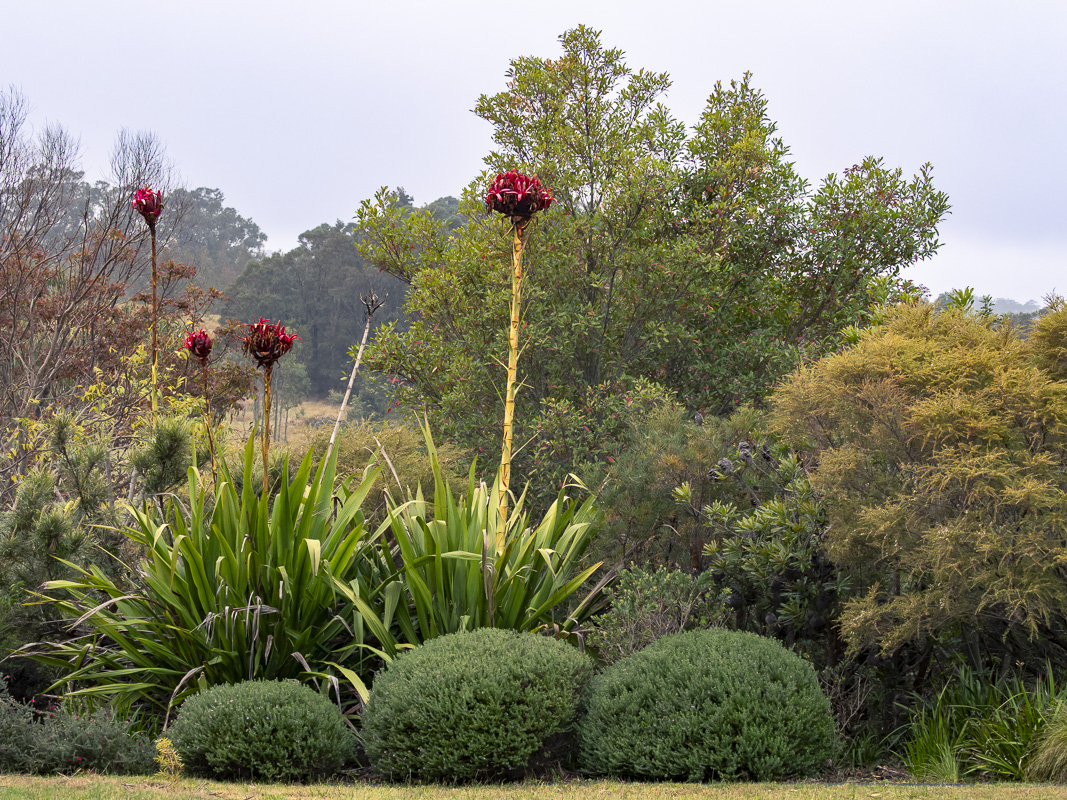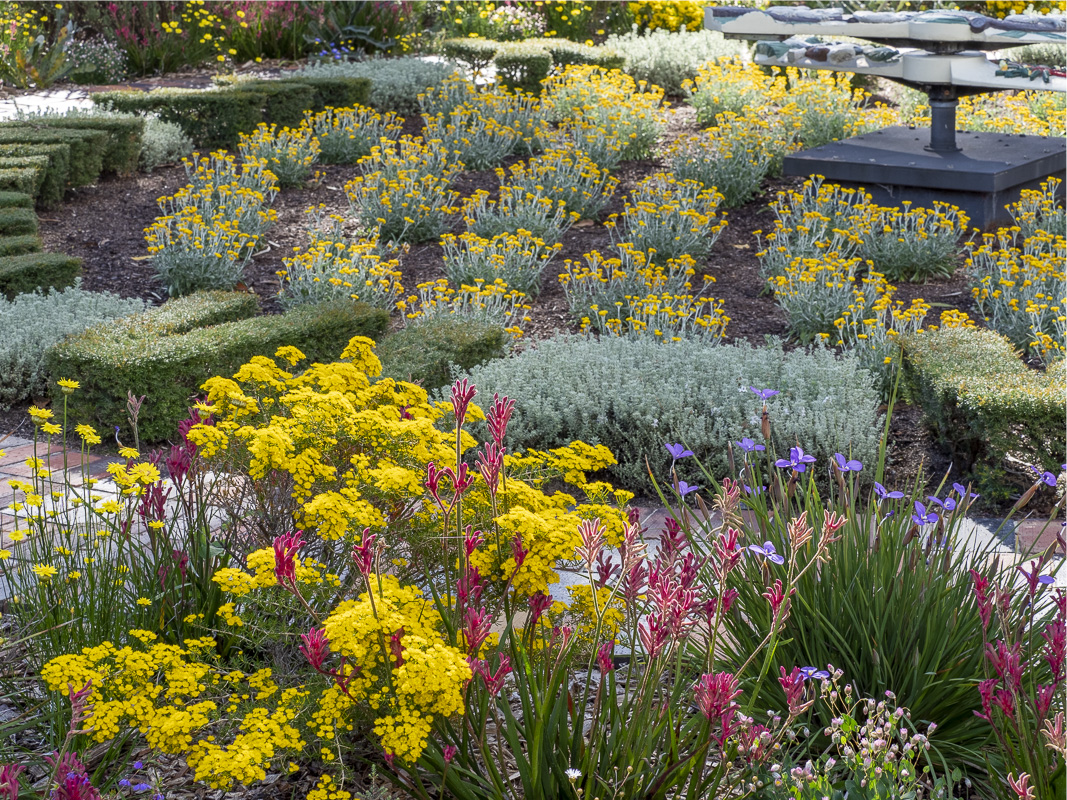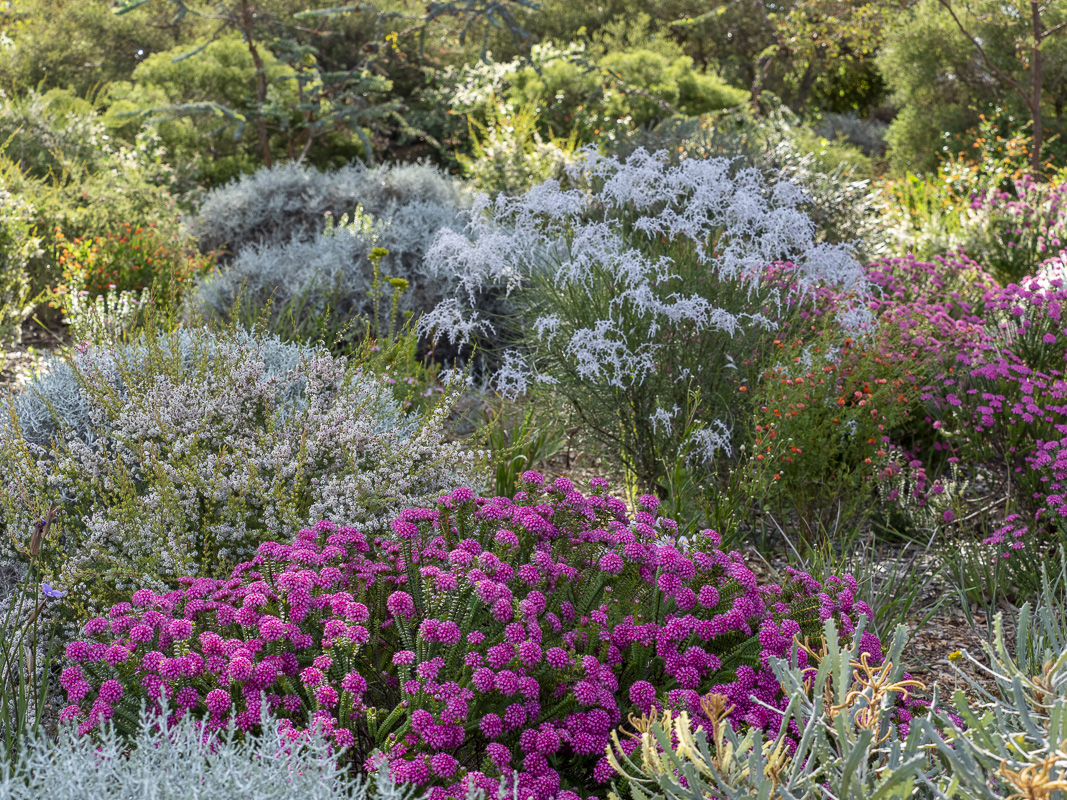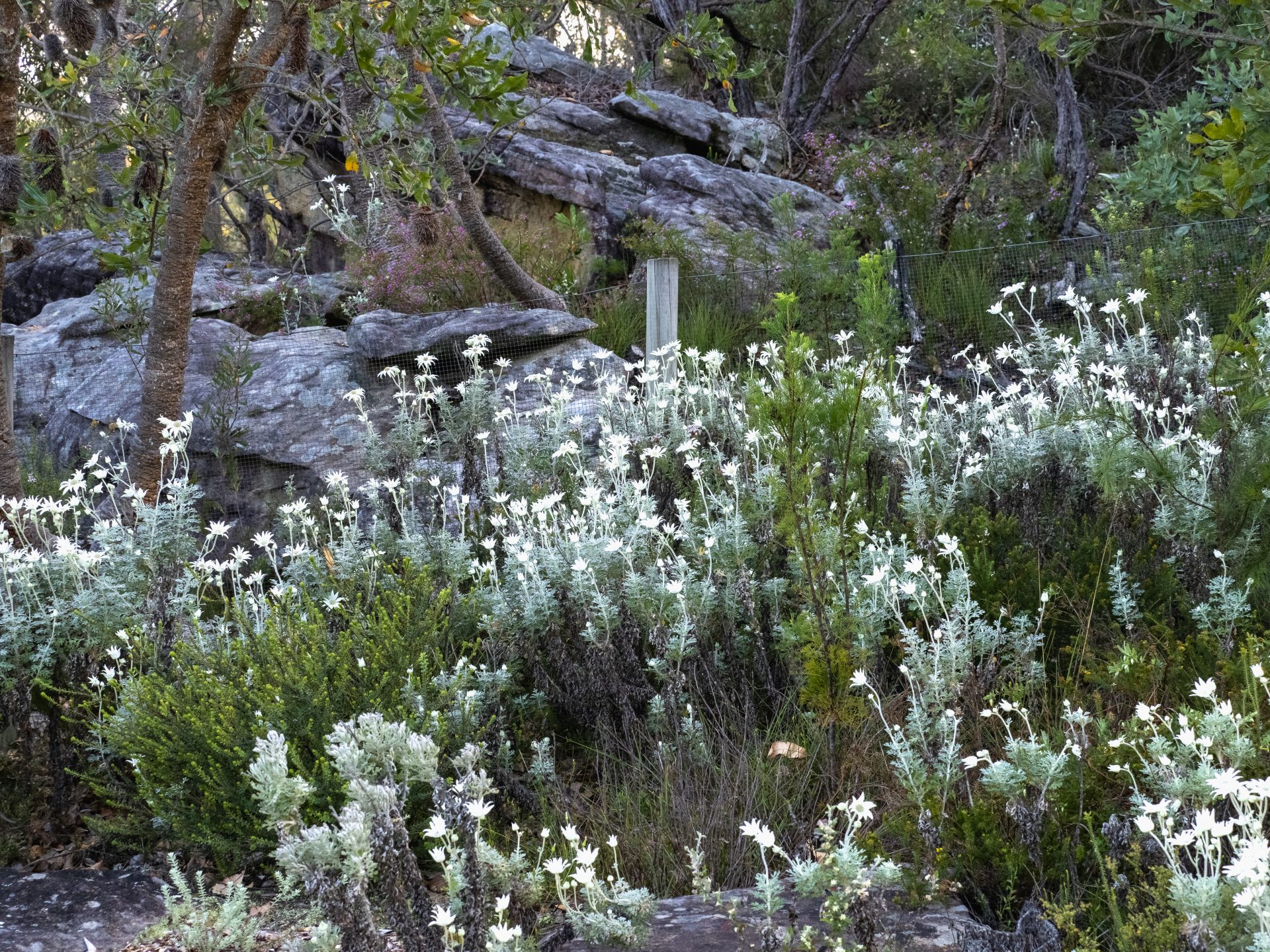When designing a new native garden, choosing whether to create a formal or informal native garden style is one of your first steps.
There are different things to consider when choosing the style of your garden. One of these is the overall look and feel of the garden. Another is the degree of change you are willing to make over time. This is where a choice between a formal or naturalistic native garden style comes into play.
Read on for tips to consider when selecting the right design for you.
Formal gardens – less change over time
A major characteristic of a formal garden style is its lack of change over time. Once set out at the beginning, the pattern is maintained and is there for life.
There is repetition of plants in the design. A hedge is a good example. Growth in each individual plant is allowed until a certain size is reached, then is restricted by regular pruning.

This work is ongoing but straightforward. Such order, symmetry and certainty appeals to many people who experience a sense of timeless elegance in the style.
Of course there are variations each year throughout the seasons but these are minimal once the garden is established.
Assuming plants are well selected initially (more of a challenge with less tested Australian plants), a small formal garden presents few challenges.
In a Iarge formal garden, there are more plant varieties to select and a greater range of design possibilities. Pruning is more complex and demanding – and there’s always the weeding! Small areas might need redesigning but generally the garden will always look symmetrical and controlled, and remain relatively unchanged over time. Two gardens that showcase this approach, at least to some extent, are:
- The National Arboretum in Canberra
- Mt Penang Gardens, on the Central Coast


In Australia, a formal garden can be either exotic or Australian plants, or a combination of both. Once the composition formula is decided, the aim is for it to stay relatively unchanged over time.
Informal gardens
Ongoing evolution
In an informal native garden, the design is oriented around ongoing evolution.
Plants of the same species may be repeated in the initial design but generally grow under different conditions, in various microclimates, with different neighbours. They can develop different forms at different rates leading to different treatments in the garden.
There are often a greater number of species in an informal garden, leading to higher levels of management and seasonal variations. These images were taken in the Kings Park and Botanic Garden in Perth.


New species of native plants, hybrids and cultivars are constantly appearing in nurseries (or other APS members’ gardens), often with superior form, foliage or flowers.
So every year the palette of plants is likely to change, sometimes subtly and other times dramatically. The Australian Botanic Garden at Mt Annan shows this style in all its beauty. Each year, the fundamental design remains the same, but the plant palette differs, evolving over time.

The planting design of a naturalistic garden usually tends to be more fluid. Many of our Australian plants are fast growing, so the pace of change in our gardens may be rapid.
As Australian plants have not been long in cultivation, it can be difficult to estimate future sizes. Frequently, a shrub might get too large for its allocated position. Pruning is one answer, of the shrub or its neighbours. If it needs repeated pruning, it may be time for removal and redesigning with one or more smaller plants.
Generally the design is flexible. If a particular species fails, we try a different one.
Impacts on garden design
Severe weather such as storms with strong wind or hail, prolonged drought, or frost can also kill or damage plants. The death of any plant is sad but the chance to do a little redesigning is not.
Plants self-sowing also initiates change in the garden, sometimes with generous abandon. For example correas, croweas, grevilleas, grasses, bulbines, orthrosanthus all might self sow. If you live close to a large patch of bush, many of the indigenous species will also pop up, brought in by the birds. We can leave them, transplant them, give them away or just pull them out.
If self-sowing is too prolific (some pandorea forms spring to mind) the plant may be a potential weed and need removal. You can let ground cover plants that spread by suckering loose or prune them to size. You can also transplant sections.
This sort of choice is possible only in a fluid design.
A naturalistic or wild garden of indigenous plants

It is interesting to compare a created, informal garden with a naturalistic garden, self-sustaining with (of course) all indigenous plants. Here the cycles of life, growth, death and decay go on ceaselessly to produce a coherent and very fluid whole. The overall appearance is remarkably constant although the components are ever-changing.
In a created garden we mourn or regret the death of one plant; in a natural garden (apart from a mature tree) it is usually just a small part of the total pattern.
Choosing the degree of change we want
We can choose the degree of change we want in our native gardens. It can be formal or naturalistic, or of course, a combination of both.
If we want to minimise change (and perhaps effort), we select reliable, proven plants (especially for the framework) and not introduce wildcards. We choose plants of appropriate mature sizes and space them accordingly. We prune plants to the size we want (though preferably not too frequently).
Alternatively we can go for change and spontaneity in the garden, a more natural look though still largely designed.
You can retain the overall framework of hard landscape and major plants but the details allow a degree of randomness. This can be more work for the gardener but is potentially of greater interest and diversity. As years go by, the detail of the garden can become finer, with the introduction of tiny plants and the appearance of mosses and lichens.
It comes down to the gardener’s preference. Some may favour the structured permanence of a formal garden, while others find fulfilment in the ever-evolving canvas of a naturalistic haven.
Original article from the February 2005 issue of the Study Group Newsletter, edited and images by Heather Miles
 Australian Native Plants Society (Australia)
Australian Native Plants Society (Australia)